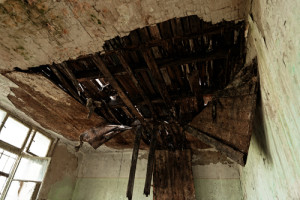 The Building Code of Australia (BCA) outlines some of the safety, health and other building standards that apply across Australia. The BCA’s standards relating to waterproofing can be found in Parts 2.2, 3.3.4, and 3.8.1. This article reviews the role of the BCA and the key sections of the BCA that pertain to waterproofing standards.
The Building Code of Australia (BCA) outlines some of the safety, health and other building standards that apply across Australia. The BCA’s standards relating to waterproofing can be found in Parts 2.2, 3.3.4, and 3.8.1. This article reviews the role of the BCA and the key sections of the BCA that pertain to waterproofing standards.
The Building Code of Australia
The BCA has the role of creating and enforcing building regulatory legislation in all of Australia’s states and territories. The Code was created to provide uniform standards to support the achievement of safety, health, amenity and sustainability goals.
The BCA includes technical guidelines or standards for design and construction of structures. It also covers structural issues, fire resistance, access, services and equipment, energy efficiency and safety issues such as waterproofing.
Waterproofing Standards Set by the Building Code of Australia
Part 2.2 Damp and Weatherproofing
The first set of waterproofing standards in the BCA can be found in Section 2.2, which outlines damp and weatherproofing standards for external elements such as walls, drains and swimming pools. Objective 2.2 states that the purpose of the section is to ‘safeguard occupants from illness or injury and protect the building from damage caused by surface water’, among other types of injury or damage related to water. These types of damage may also include external moisture entering a building, the accumulation of internal moisture in a building and discharge of swimming pool waste water.
The BCA expresses standards in terms of performance requirements. With relation to damp and weatherproofing standards, these include:
- Performance requirement P2.2.1 © – Drainage systems that dispose of surface water must convey the water to an ‘appropriate outfall’, avoid the entry of water into the building, and avoid water damaging the building.
- Performance requirement P2.2.2 – The roof and external walls of a structure must prevent the entry of water that could lead to unhealthy or dangerous conditions, a loss of amenity for residents, and undue dampness or deterioration of the elements in the building.
- Performance requirement P2.2.3 – This performance requirement is concerned with dampness. It states that moisture from the ground must be prevented from causing conditions that are unhealthy or dangerous, lead to the loss of amenity for occupants, and the undue dampness or deterioration of building elements.
- Performance requirement P2.2.4 – This performance requirement addresses the issue of drainage from swimming pools. Drainage from pools must not cause illness to people or affect other property.
Note that as each state or territory adopts the BCA subject to the deletion or variation of certain sections, these standards may vary depending on the state or territory.
Part 3.3.4 Weatherproofing of Masonry
Part 3.3.4 has detailed provisions on standards for waterproofing masonry, including requirements for cavity ventilation and drainage (3.3.4.3), materials for damp-proof courses (3.3.4.4), installations and flashings. There are specific standards for different types of walls, including single skin masonry walls.
Part 3.8.1 Wet Areas
This section contains standards for wet areas in structures. These standards cover protection against water for certain spaces, size and materials for wet area waterproofing and water resistant construction, and sealing and protecting certain spaces and structures within the building. Like Part 3.3.4, Part 3.8.1 has highly detailed and specific standards for waterproofing within structures.
At Projex Group our products comply and exceed the standards set by the Building Code of Australia. If you have any questions regarding our products, please feel free to contact us on (02) 8336 1666.